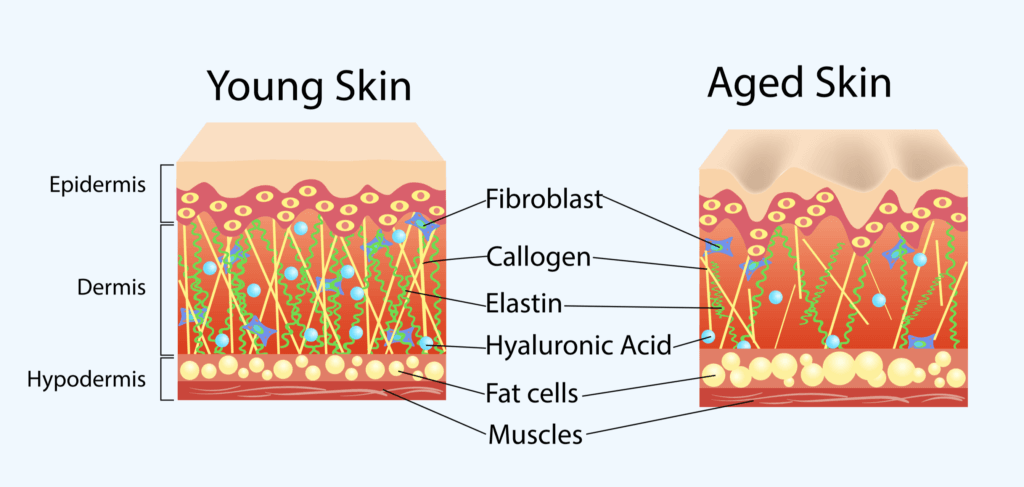Many wish that they could stay looking youthful forever, but as we all know, with age comes wrinkles and the occasional sagging of the skin. But what holds it all together?
Collagen is a protein in the body that provides structure to the skin. This is the most commonly found protein found in the human body, known as the glue that holds you all together. Collagen is the primary component of the connective tissue that helps keep your skin looking young.
When these levels of collagen are high, your skin will look firmer and more supple. As you age, the body produces less collagen, which causes a lot of the changes that you will likely want to avoid. Taking collagen supplements may help slow the aging of one’s skin by reducing wrinkles and dryness.
The supplement accomplishes this by prompting the body to produce more on its own. It might even increase the production of other proteins that help with elastin and fibrillin.
Beyond taking collagen supplements, certain procedures can actually stimulate increased production of this protein by the body. Laser liposuction, for example, can actually help tighten the skin because the laser used to liquefy a patient’s fat also helps promote the production of collagen. Keep reading to learn what laser liposuction is and how it can tighten the skin.

Laser Lipo: How the Procedure Works
When one thinks of liposuction, they may be thinking of the invasive surgery that removes fat from the body using a tumescent solution. Laser liposuction still involves removing fat from the body through suction (hence the second part of the name); however, that is where the similarities end.
By using heat from fiber-optic lasers at different wavelengths to melt body fat before removal, this technique even boosts the production of collagen. Many researchers believe that this is the key to optimal body sculpting. Patients that went through laser liposuction saw not only significant fat loss but also skin tightening effects.
While results from different studies have proven promising, more research is needed to understand the mechanism underlying just how laser liposuction causes the skin to contract.
Liposuction Alone Vs. Laser Liposuction
When a person gains weight, their skin expands in order to accommodate the expanding fat cells. Removing the fat with liposuction comes with risks that affect the skin. Your skin may seem bumpy or withered due to uneven fat removal, reduced elasticity, and unusual healing. That being said, combining laser lipolysis with traditional liposuction has been seen to produce the best results. Note that laser liposuction won’t tighten the skin like specifically designed procedures, such as skin lifts. Still, laser lipo technique can be highly beneficial for those worried about sagging in a treated area after having significant fat removed.
Risks of Laser Liposuction
The risks that are associated with traditional liposuction also can prove to be safety concerns during laser liposuction because fat is removed similarly with a cannula through a small opening. There is a chance for bruising, blood clots, or even temporary numbness. The added risk that comes with laser liposuction is burned skin if the surgeon is not cautious of the temperature and laser’s wavelength.
Like most procedures, this is not a one-size-fits-all situation. Health conditions may preclude you from being able to go through the surgery. Talk to your surgeon about any health risks that you may have during the initial consultation.
Conclusion
Laser liposuction uses a combination of wavelengths to break down fat cells and tighten the treated area’s skin by stimulating collagen production. This procedure has been proven to provide dramatic results, explaining its surge in popularity recently. However, despite being categorized as a permanent fat reduction treatment, it is essential to maintain a healthy lifestyle afterward to ensure longer-lasting results.
